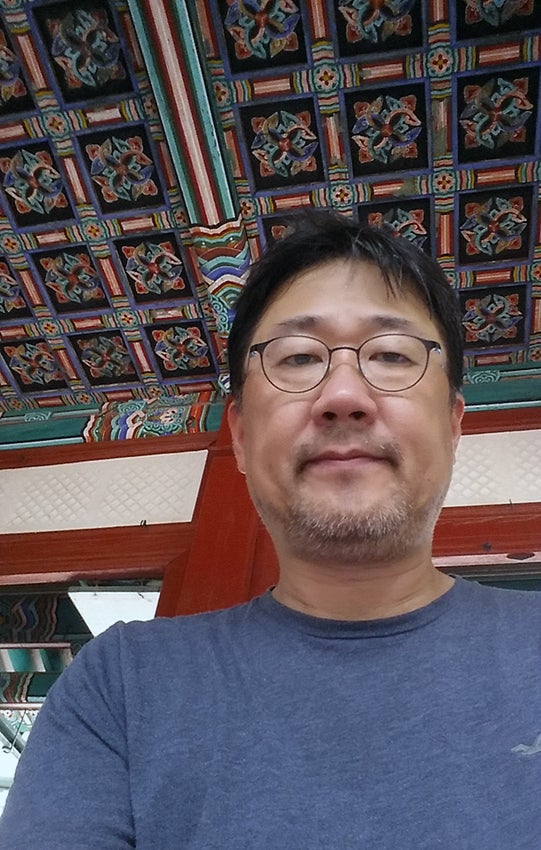
I teach typography and editorial design at the College of Art, Cheong-Ju University in Korea as an assistant professor. My career as a designer is a bit longer than my 12-year dedication to the campus as a professor. This became my character for teaching methods of design. With my experience as a designer, I could adopt various practical solutions to this academic and systemic curriculum for design. Actually, I’m not active in the field. So, I develop case studies to share with my pupils to help them catch design methodologies. I’m more fond of observing and retrospection than standing on the front line. I wasn’t like that for the first time, but my pursuit of editorial design somehow affected me. I build context through understanding the main idea of the content. Afterward, I use designs to help grab it with flourishing ease.
Being based in Korea, I’m familiar with Romanian typography, the global standard, as well as East Asian typography. For I’m used to moving across various realms of types, my works on typefaces are set to design that boosts linguistic aspects of the subject. For a long time, I’ve been working on building an effective way of communication for others. Now, I’m more leaning towards finding meanings behind daily life. Specifically, I’m working on various ways to explore the languages of the objects.
Visual design is a practical study. Providing field-ready practice to the students is an important part of the instructor. It has to be delivered as much as it can be in a limited period of time. Training design projects for students should be educational both in its course and result. It also has aesthetic aspects for each other. Catching the right question in the project is the first step for visual communication design. So, to extract efficient results in teaching design, one has to look around and explore daily life to find out the right questions for the project. The outcome should be an answer to that question as a designer also providing an outlook for the future. I’m interested in teaching methods with problem-solving. However, I’m focused on letting the students set their own set of questions. I just provide the methodology and work process. As well as the design direction. Society mostly wants designers to solve existing problems. To do that, it is important to hack the core of the question. By helping my class to set questions right and face them with their own, I could achieve them to have the ability to come up with creative solutions.
The institute where I am is 2 hours away from Seoul, where 20% of the whole population of the nation thrives. Cheong-Ju is the administrative center of the Chung Cheong Buk-Do province. However, it holds about 850,000 citizens which is no more than 8.5% of the population in Seoul. Korea has provisional governments. But Cheong-Ju lacks in most of the social factors compared to Seoul, including politics, industry, culture, and art. It’s also dimming its own identity besides some traditional, historical, industrial bases. Most of the things on my interests, culture, art, and design agendas are condensed in Seoul. This environment gave me some thoughts about local aspects. Each province has its own story based on the local environment. This can be expanded as contents which can be reproduced in certain ways. Certain design products could provide small hints to boast solidarity and empower local residents. If this is sustainable, local aspects and capital aspects could coexist. Those various local identities could be evolved into part of the Korean identity. If local identity is gone, it will be absorbed into the capital. As a faculty in a local institute, I’m looking for ways to contribute to the local community with education and projects.